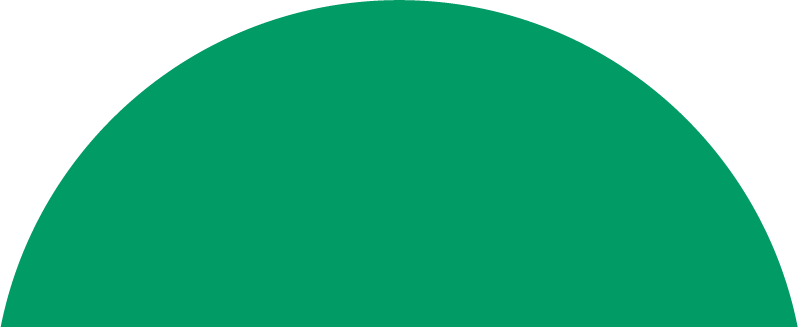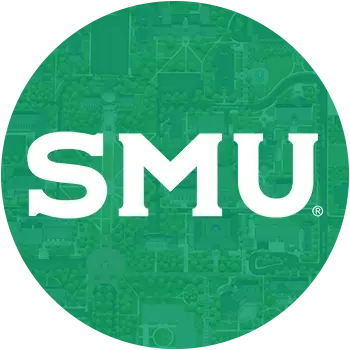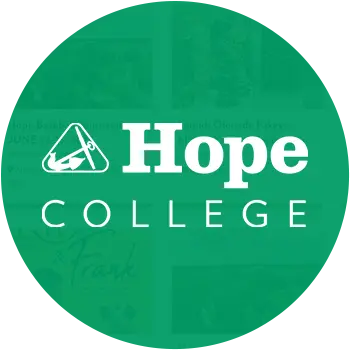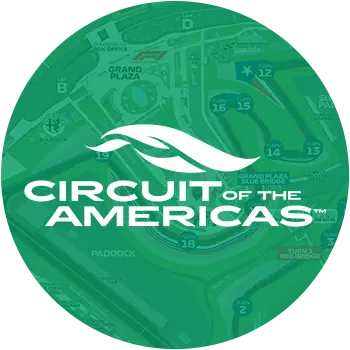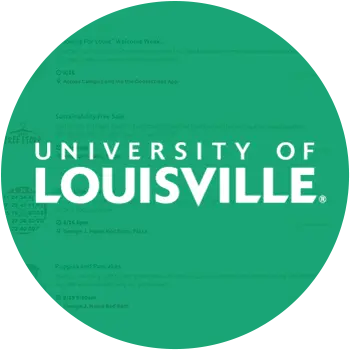Episode 62: Where Does Higher Ed Marketing Fall Short? With Philip Smith

Read the transcription
Shiro Hatori 0:01
Hey everyone. Welcome to the higher ed demand gen podcast hosted by concept 3d. If you like this content, please please, please follow and subscribe to us on your respective podcast platforms. And if you’re on Apple podcasts, please drop us a comment. We love comments, we want to hear what you think about the show. My name is Shiro, and today we’re gonna be talking about building a content culture around video. And also where higher ed advertising fails short or falls short, I should say. And for this topic today, I’m super excited to have Phillip Smith joining us. Philip is an education consultant and fractional CMO. He’s also a writer for the education leader insights and CO hosts the ed up Mark comm podcast. Welcome to the podcast.
Philip Smith 0:52
Hi, Shiro. Thanks for bringing me on excited to be here.
Shiro Hatori 0:57
It’s great to have you. And I do like asking our guests this as a quick icebreaker. Philip, what do you love about higher ed?
Philip Smith 1:05
Yeah, I think I love the transformation aspect of it. In particular, I think I love how someone can learn and study in a place. And that becomes something different, you get a new job, and that can change the whole life, essentially, undergrad post grad the same. You know, I just want the transformation, I spoke of higher ed to be kind of magic and life changing like it like if you do work, I read your diploma course you do. It does change your life, your income where you live, it changes everything. So I think that’s kind of magic about it.
Shiro Hatori 1:37
That’s great to hear. Thanks for sharing that. And you know, I love to jump into our topic today. So I think the topic today is a pretty unique because I don’t get to talk about it. This specifically often because usually, like most hired leaders I talk to hire out for this work. So I love I love getting into the details and talking specific so. So first topic will be around using video properly. I know we had a prior conversation in our introduction talk to talk a little bit more about like how higher ed can be really utilizing video more effectively. And so from that, I’d love for you to take it away.
Philip Smith 2:13
Yeah, fantastic. So So video is definitely one of the cornerstones so focused on what I’ve worked with colleges and universities. So video was really effective to communicate messages quickly. Historically, what we’ve done a lot in the hybrid space is we’ve done a lot of text, highlight is complex, we’re trying to give away a lot of information, how was the course delivered, what is the you know, modules in the course, there’s a huge amount of information we give. And the result is that on our websites, there’s a huge amount of text on the on the course website pages. And that also comes across sometimes in ads and marketing messages in an emails, just huge amounts of text, video was a much more effective way of communicating, it’s much more effective in terms of your marketing results in your ROI, whether it’s on your website, or in your ads, there’s different types of video as well we can use to write in high rate, if you go to a university website, you’re gonna find one, two videos, no website, there should be maybe 50 or 100 videos on your website that really like that kind of volume, you can have one or two or three videos on every single course website page, a video of the Lego lecture talking about and explaining what’s the content of the course what he’s going to teach you, and you know, familiars familiarize themselves with this lecture, student testimonials talking about this specific, you know, outcomes and and experiences throughout the course. So, you know, often will find as well kind of student testimonial videos and websites and hybrid websites where there may be just a compilation and it’s the same video, you know, if I’m doing a degree in business or a degree and maybe you know, science, I want to hear from the person who’s done that degree specifically at you know, videos for that specific students. So haven’t videos that are specific to the course from that lecture for that degree, but the course content, students talking about their experiences for that course. Really specific videos and just all across the website as well. And yeah, video was definitely a big game changer thing for higher ed.
Shiro Hatori 4:16
Yeah, and it what what are some of the results you’ve seen from universities and institutions? Like, let’s say, building out more videos for each program or course page?
Philip Smith 4:27
Yeah, we’ve done video and we have a video for a lot of different universities, we’ve seen three to 4% You know, engagement in the videos, three or 4x increase ROI in terms of return on adspend for the views video in ads, you know, better conversion between the views video on the course, landing pages on the websites, just using video across that user journey for prospective students really jumps up results. And it’s it’s, it’s just a very it’s not surprising to me I think. If you go to most People rarely go or video works better that oh, yeah, of course it does, we know it does. It’s just that that kind of kind of putting the effort into it, putting the strategy in place, and then creating it on it on a regular, consistent basis. And because sometimes, as well just see on a lot of university websites is testimonials, videos, just content that’s three, four years old. But it needs to be, you know, really, this, this quarter, at least this month, people really react to fresh content. And that’s something as well, that’s that’s missed out on, or this is a testimonial from our class of 2022. Now, I’m here in July 2023, I want to hear from someone who’s on the course now, we’re just graduated, like really fresh testimonials and videos and fresh content is, is a lot more effective.
Shiro Hatori 5:45
Gotcha. And, you know, if I’m thinking in the shoes of someone who asked to manage and create those videos, it’s my initial thought is, it’s a lot of work a lot harder to build out video, versus copy for a program on a web page, right? Like, if I were to compare the two. Yeah, how do you? How do you justify that time spent? Or like, how do you maybe build a culture around prioritizing that video first, because if I’m thinking just the math, let’s say I know I’ll get a 400% ROI. That’s a pretty, pretty clear answer, right? But results, how can I? How can I make something that’s repeatable there and scalable there have what have you seen from institutions that have been able to do this successfully? What I’ve seen
Philip Smith 6:37
work well is accrued, essentially. And it’s kind of, I suppose maybe a word or phrase, but a kind of calendar, but maybe a more specific, more advanced content calendar. So the content calendar, as you see a lot from you know, obviously market managers, and I was myself was a marketing director at a group of colleges uses. Okay, in August, we’ll create this content. And in August, we’ll do food photography of all the lectures. In September, we’ll do fresh video content. But the trick is getting really specific, I think, with your content strategy. So planning down to each course each person really, you know, narrowed it down but and then try to try to bring video in as part of your kind of natural process, I think of a where can I get video from students where they’re all going to be there at one time? And then, you know, often the answer is, okay, the graduation event, or this event, or this, this, this, this new after the exams, there’s, there’s certain times where you can slide in your video content. And it works really well, where you’re able to get the people there in the right place at the right time, and then do it in a repeatable process. And then the struggle really just becomes about the creation of this, which is more about, you know, using the road team internally or externally to create that over and over again.
Shiro Hatori 7:51
It’s very interesting. So are, I’m just trying to think in, within the school years timeline, like the key points are like around graduation, maybe to implement like some of these recordings or schedule some of these recordings like what are the good points in time? That you should be? Yeah, that would make this process easier.
Philip Smith 8:12
Yeah, there’s some interesting times I think, often, you know, you want to try to offer video was done with people who have just graduated, what’s great to do is get is to keep a good relationship. And if you have good alumni networks going on this is This is easily done. But to do videos, people who have graduated maybe one or two years, you know, and get testimonials, kind of from those people as well see where they’ve gone or what happened. Because people want to see outcomes. They want to see what happened in their career, did they, you know, if I do an undergrad, but I get into this master’s, if I do this course, is sharp, people want to see the outcomes. They also want to see video conference, kind of people who have just finished the course and experienced it. So time’s up, graduation is great for that. But it’s about trying to capture the journey of the student from, you know, enrolling during the course graduating, and then what happened to them in the future after they did your course. Because, again, the long term outcomes are the real drivers for people, you know, employment being probably the biggest driver for anyone.
Shiro Hatori 9:12
It’s interesting, I think that that kind of rolls up to a very high level topic around experience versus outcomes, like how you’re marketing your school. And I think traditionally, it’s sorry, education experience and outcomes, and traditional ethic. You know, we’ve really marketed on the education itself, but schools are having to pivot more towards Yeah, outcomes, which is something they didn’t talk about as much before an experience as well. Yeah,
Philip Smith 9:40
very important.
Shiro Hatori 9:43
So well, that’s, that’s great. Moving on, or switching gears a little bit here, sort of related to their previous topic, but you actually manage and oversee a lot of paid media, right? Yeah, directly. And you shared some cool look at opportunities you see with a lot of your clients right within higher ed. Yeah, I think you mentioned a few few opportunities. Do you mind sharing some of those top few?
Philip Smith 10:13
Yeah, sure. So I suppose I’ll just go through kind of my sort of like core principles or philosophies around doing paid ads for higher ed. So if you’re using social social media ads, for example, that to me is often really the kind of top of funnel you know, often the ads used hybrid spaces will do ads on LinkedIn, Facebook, Instagram, Tik Tok, and so on, will do those ads we apply now and more. Now. You know, what if they’re not if they’re not, you know, the exception if they’re maybe retargeting or remarketing lists to specific lists of people, but if they’re just running ads to cold audiences, because pushing for the applier, or enroll now, to me is a big mistake. You know, I think it’s much more effective to push for lead collection, you know, and push for them to download a brochure to learn, read about the course, you know, offer free webinar free events, they can come and learn about the course next questions. Realistically, those kinds of ads work when you’re selling low ticket courses or low ticket items, you know, for 20 bucks, but but we’re talking about a course of 510 $20,000 Plus, you know, if I’m just seeing this, this as the first time, I’m actually going to jump in and typically spend that kind of money, by the way, there’s there needs to be more preamble than this more steps before that, and to learn about the course to speak with people to, you know, to engage and, you know, be nurtured to a point before that. And in terms of Google ads, that’s where you can do more conversions, you know, do more, and have your conversion tracking set up via your application from a phone. And that’d be really effective to to have you maximize conversions or specific and bidding per conversion, that have the conversion set up to application form. For Google ads, typically, Google search ads is what I find to be extremely effective. And that’s people that are kind of at the point of purchase. So they’re very warm, and in terms of their their activity researching. So I’m on Google searching for where can I go for a business degree? Where can I go, this is the degrees in Boston, whatever the query is, but that’s someone actively, you know, in search mode, looking for degree, those people I would sell to, I would be a bit bit more fun to push in with the sale of the application and lead with that. But when it comes to social media advertising, it’s a lot more for me lead focus, nurturing free events, because you’re often targeting people who are good potential fits, but not people that have maybe been in that search mode, already kind of thinking I want to do this now. So they need a lot more nurturing. And then it comes to more, where are we sending these people in the landing page? And what are we doing with them, but via email to nurture them? Those are those are real pivotal points I find that are often overlooked as well.
Shiro Hatori 12:54
Gotcha. So just kind of to review and summarize, what I’m hearing you say is, sure, you see a lot of a lot of opportunity, especially for social paid media, to try different offers, invite into free events, give them content offers, that aren’t just at the brand awareness level, but at least one step deeper, where you can collect some lead information data. And with that, you can use them to nurture them via email or again, through social media. That’s one thing I’m hearing and then the other thing you’re hearing is you can’t expect the student to commit to 30 to 40k, a semester school off of one ad, and so maybe create some other offers and engagement points in between that journey. If you’re not seeing a lot of results from those more bottom of funnel advertisement options, is that right?
Philip Smith 13:50
Yeah, yeah, that’s really spot on. Like, there’s there’s a lot of focus on those that goes into the ads, but not a lot of focus goes into where we’re sending them, you know, or what do we do with them? Once we have them? You know, what are we you know, 100 captured information, what are we doing with the same old habit. And that kind of piece of is what’s really lacking as well. What’s really, I think, lacking in terms of paid ads in the higher ed space, in particular, is urgency, where there typically isn’t a lot of urgency. I’ve seen it more recently, in the past number of months, you know, huge universities like MIT, having special offers an urgency in their ads. But historically, it hasn’t been a great and a great segue for doing that. But again, urgency is really important to try and get people to reply to the email to to book the webinar to that make them fill in the application form to get them to take that next step.
Shiro Hatori 14:39
Can you can you explain why, why or what urgency is and why it has this effect?
Philip Smith 14:46
Yeah, so essentially, urgency is something I speak with a lot of education institutions about and it comes in all different shapes and it looks it can look very different. It might be at the special offering the course price, it might be a cut off deadline to enroll or apply. If it might be, you know, certain value incentives that are there in place, if they enroll early, then you get this additional incentive to enroll at this additional benefit. And we could just be showing the places left in the course. You know, quite often, if you go to an application, of course page to apply, it doesn’t say how many places during the courses and saving money are left, it just says apply, you know? Okay, I’ll do it next month. And if if I’m looking at this, maybe in July, if we aren’t, you know, it’s it’s July now. And of course, it’s September. Why should Why should I apply? I want to apply, but I’m a little busy this week, I’ll do it next month, you know, but if you’re telling me that 50% of this course is failing right now, okay, that’s different. I’ll make it a priority to apply to this course this week, you know, and now we’re getting more applications faster and easier. There’s just that urgency, just important to and transparency as well, to show people why they should act faster rather than later. Because what can happen later, as well as, like, maybe next month, I’ll do it next year. And then I’m totally I started to do it anymore. All right, I’ll go to a competitor, I’ve worked with someone else, I happen to see their ad and I’m scrolling through social media, because I’ve waited, you know, a lot can happen if we if you let prospective students wait, where you want to try and convince them of the value that you’re trying to give them with your with your education through courses.
Shiro Hatori 16:19
That make sense? Yeah, they scarcity is a natural human response. In that, yeah, you know, things are scarce. You want them more? So makes perfect sense. I have kind of a question more around? Sure. So as as a consultant to an agency, co founder and CMO? Yeah. Like, if you’re in a higher ed leader? How, how do you know when going in house or out out out of house is the right option?
Philip Smith 16:51
Yeah, I think there’s there’s a couple of ways to answer that question. But I think for me, previously, I was a group of marketing director for group of private colleges, and, you know, over 5000 students, you know, your big operation, and it made that decision all the time, you know, do I do it internally or externally. For me, if if I suppose if I am in the shoes of a CMO, try and make that decision now. And one is I would always look for businesses or agencies if I am going to external better results based. So commission and results based are really great ways to look at my offer that myself and that I created, I suppose agent that was commission based, because I wanted an education focused agency that was commission based when I was a marketing director, but but look for commission based offers, look at the price points at the costs, often it will be more expensive to to outsource potentially. But the results are really important. Often, what I’ve I’ve advised to do is to have a consultant, you know, used for the strategy, or fractions or someone like that, to use the strategy and to kind of use them sparingly, and then have the team do the legwork and the execution of that of those ideas. So use the people that are expensive for the strategy, use the team for the execution and use those experts to educate the team to make what you’re doing and they’re doing better. I think that’s a good way to do it. But for certain things, I think it just makes sense to our sources. So before you mentioned the kind of creation, things like video production, for me should always be outsourced. If you try and do that internally, properly, it’s extremely difficult. Because you need a videography team, you need a video video editing potential. You know, there’s a lot of different steps of parts to that, which can be difficult and expensive to execute. You know, where it’s though things like that, I think are better outsourced. And, you know, leave the rest to be done internally.
Shiro Hatori 18:50
Yeah, that makes sense. Making a video once a month. It’s gonna take you forever, because you’re not in the regular workflow things. But if you’re someone editing videos and shooting videos every day, you know, you get things done in a snap. Does it make sense? To hear it? Well, great. You know, Phillip, it was really great to have you on today. I was wondering where some of our listeners could connect with you to learn more about everything you do in higher ed and ask you any questions.
Philip Smith 19:18
Yeah, absolutely. So the easiest way to find was on LinkedIn. And I think if you Google Philip Smith, or search for me on LinkedIn, I think I’m the number one for Smith there is no disrespect to the Philip Smith’s. But I’ve got a follow on about 14,000 CEOs and founders of colleges, universities and so on on LinkedIn. So that’s an easy place to find me. There’s lots of free resources there they can tap into and they can book a call or send me messages they want to ask me any questions.
Shiro Hatori 19:46
Thank you so much. Thanks so much for joining us today and thank you all for listeners for tuning in. Make sure to check us out on the next episode and Philip I hope you go have a good workout after this because then
Philip Smith 19:59
I Thanks Thanks so much
Shiro Hatori 20:02
All right thanks everyone bye bye All right I just stopped the recording here it just has to finish below
Transcribed by https://otter.ai
We saw the potential of Concept3D’s platform right away, and it was amazing to see our space come to life in a fully interactive 3D map. We know the platform will improve the overall guest and attendee experience, and we’re excited for all the ways that we can use it for both internal and external needs moving forward.
Vantage is committed to exceptional customer service, and the technology developed by Concept3D helps us work closely with potential clients, give them an incredible preview of the data center and offer a compelling way for them to explore the critical details of our facilities.
The biggest challenge for [Claremont Graduate University] was lack of a centralized map system entirely. Roughly 30 different maps existed on our website pre-[Concept3D], created by various departments to meet their own needs.
The new virtual campus map is particularly helpful to showcase our campus to prospective students and families who are not quite ready or able to physically visit campus. International students are a great example of a group who typically do not visit our campus before enrolling, but really value getting a birds-eye view of the place they’re considering calling home.
The CMS makes integrating our data feeds a simple, easy process. We can update our content feed once and it updates within the CMS and our map simultaneously.
Concept3D’s photospheres really allow us to show rather than tell what separates our studios from others.
Our residents are getting more savvy with technology and they will certainly appreciate a tool that guides them from location to location on our campus. Concept3D’s wayfinding capability was the immediate draw for us, but the map and interactive media have been valuable for depicting a bird’s eye view in print materials, or when scheduling an onsite visit. Residents, visitors and even staff find a lot of utility and functionality in Concept3d, and we often hear compliments about our beautiful map.
We want Rice to be a welcoming destination for art, music, lectures, food, athletic events, lectures – a great place to visit just to enjoy the beauty of our campus. [The Concept3D] mapping system will help people find those amenities and explore those opportunities.
